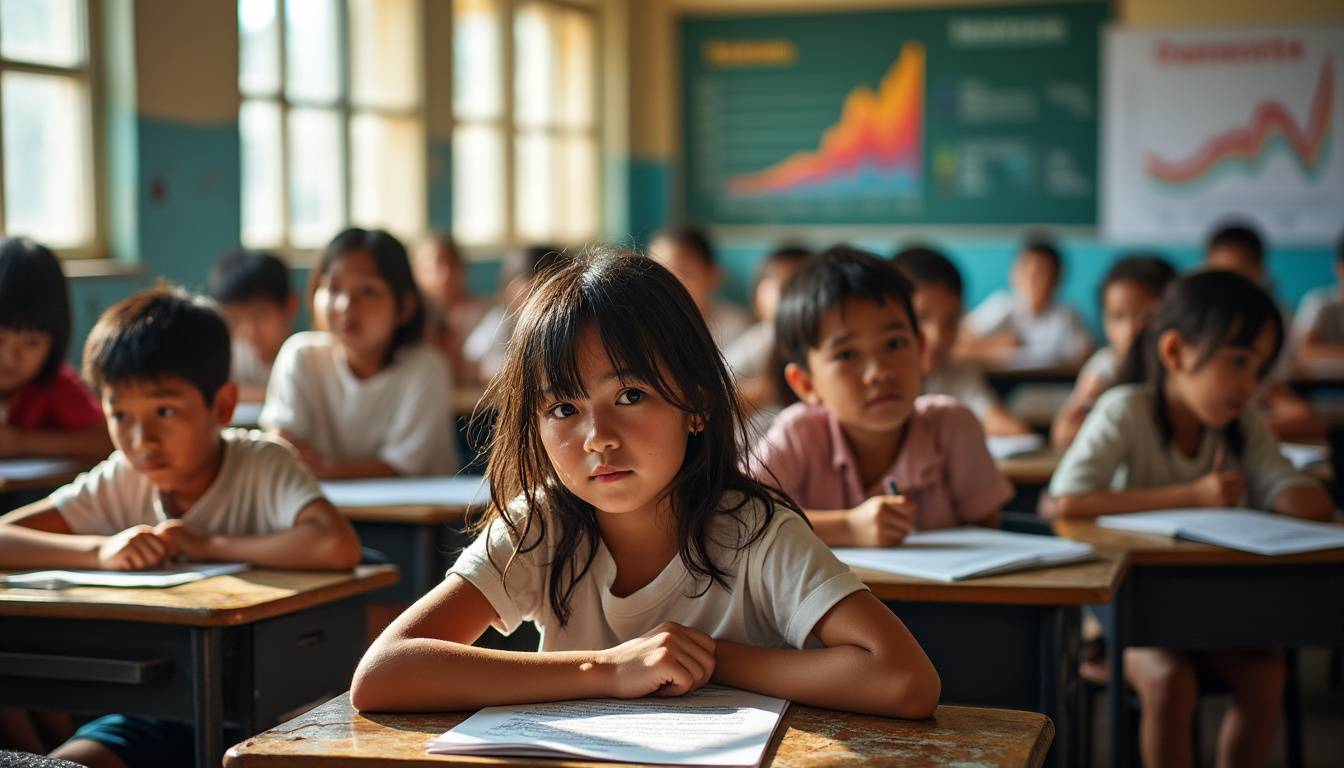As climate change intensifies, extreme heatwaves are becoming an increasingly urgent threat to children’s health and educational success. Young bodies are particularly vulnerable to these soaring temperatures, facing risks ranging from dehydration to respiratory issues and long-term developmental challenges. Meanwhile, schools and childcare centers across the United States are often ill-equipped to shield students from heat-related dangers, risking both their well-being and academic progress. Addressing this multifaceted crisis requires comprehensive adaptation strategies, targeted investments, and proactive policies to safeguard the next generation’s health and future prospects.
Why Children Are Especially Vulnerable to Extreme Heat and Its Health Consequences
Children’s unique physiology and behavior amplify their risks when exposed to heatwaves. Unlike adults, their bodies take longer to adjust sweat production, delaying natural cooling processes. Infants and young children struggle to regulate body temperature and often cannot sense when they need to cool down, leading to increased vulnerability to dehydration and heat stress.
Additional factors intensify these risks:
- Children’s higher water composition means they lose fluids faster, making dehydration a serious threat.
- More time spent outdoors exposes children to prolonged ambient heat, increasing chances of heat exhaustion.
- Dependence on caregivers to recognize and respond to heat symptoms often leads to underestimated severity, especially in socioeconomically disadvantaged families.
Research links extreme heat days to increased emergency room visits for children, with those living near or below the federal poverty line disproportionately affected. Furthermore, heat exacerbates chronic childhood conditions like asthma and eczema, posing additional challenges to respiratory health and overall quality of life.
Heatwaves Aggravate Respiratory Issues and Dehydration in Children
Exposure to poor air quality during heatwaves worsens respiratory ailments, such as asthma, which is especially prevalent among children. Along with the danger of dehydration, these health problems can lead to acute emergencies and longer-term complications that hinder normal development.
- Heat-induced air pollution increases particles and ozone levels, affecting lung function.
- Dehydration impairs cognitive functions and physical performance, potentially causing dizziness and fatigue.
- Children’s limited thermoregulation and activity outdoors compound risks.
The Lasting Impact of Chronic Heat Exposure on Learning and Mental Well-Being
Beyond immediate physical health concerns, extreme heat also disrupts children’s education and emotional states. Cognitive efficiency declines as the brain struggles to perform under elevated temperatures, while mental health issues such as irritability and anxiety rise. Nighttime heatwaves disrupt sleep cycles, reducing restorative rest crucial for learning and development.
- Each 1°F increase in annual average temperature correlates with a 1% drop in academic performance in under-air-conditioned districts.
- Schools lacking proper cooling measures risk multiplying educational disruption and long-term income losses, potentially amounting to billions of dollars.
- Behavioral challenges in hot classrooms lead to increased classroom management difficulties, lowering opportunities for effective teaching.
For deeper insights on how rising temperatures affect school performance, visit Education to the Top’s coverage on heat challenges in schools.
Nighttime Heatwaves Disrupting Sleep Patterns in Children
Excessive heat during the night interferes with sleep initiation and maintenance. Sleep deprivation due to heatwaves is linked to reduced concentration, memory problems, and heightened emotional distress among students.
- Sleep loss undermines resilience against stress and reduces cognitive performance.
- Repeated nocturnal heat events exacerbate mental health vulnerability in children.
- These effects ripple into school attendance and engagement, affecting academic outcomes.
The Challenge Schools and Childcare Facilities Face with Rising Heatwaves
Schools and childcare centers are caught between the urgency to remain operational and protecting children from hazardous temperatures. Many existing facilities lack adequate heating, ventilation, and air conditioning (HVAC) infrastructure, particularly in underserved communities. The Government Accountability Office highlights that 41% of U.S. schools require HVAC upgrades, a costly challenge that threatens educational equity.
- Prolonged exposure to heat indoors and on unshaded playgrounds raises risks of burns and heat stroke.
- Heat-caused closures disrupt learning continuity, affecting food security for vulnerable children dependent on school meal programs.
- Parents face increased burdens when schools close unexpectedly, impacting workforce participation and household stability.
Addressing these infrastructural and logistical challenges is essential for creating heat-resilient learning environments that protect children’s health and educational attainment.
Solutions to Protect Schools and Childcare Facilities Amid Increasing Heatwaves
Effective adaptation requires a multi-pronged approach supported by federal policy and community action:
- Development of clear heat preparedness guidelines and technical support for schools and childcare centers.
- Comprehensive data collection on heat impacts to inform resource allocation, especially targeting low-income and rural areas.
- Investment in infrastructure upgrades such as installing modern HVAC systems, reflective roofing, green spaces, and shaded outdoor areas.
- Implementation of waiver processes to ensure continuity of school meal programs during heat-related closures.
- Promotion of education initiatives to increase caregiver awareness of heat-related symptoms and prevention techniques.
Congressional leadership will be pivotal in directing this coordinated response, leveraging federal agencies like the Department of Education, the Administration for Children and Families, and the USDA to build resilience.


